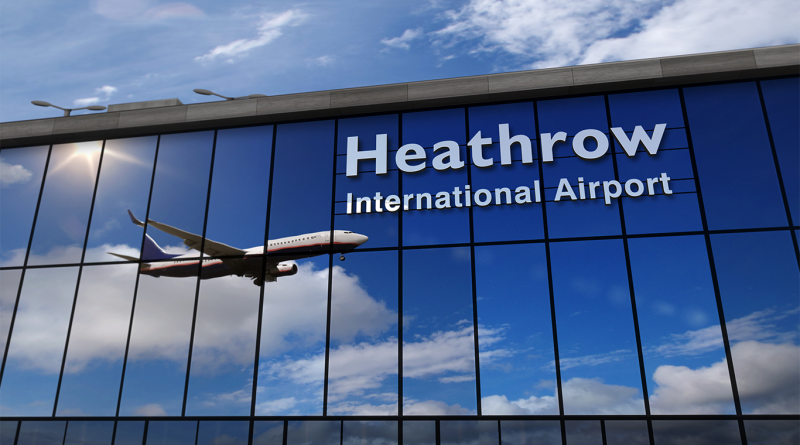Government Backs Heathrow Airport Expansion Despite Strong Opposition
The UK government has reaffirmed its support for Heathrow Airport’s long-debated expansion, reigniting a controversy that has persisted for two decades. Chancellor Rachel Reeves has committed to completing a third runway by 2035, arguing that the project is essential for economic growth and global competitiveness.
Originally approved by Parliament in 2018, the expansion has faced repeated legal, political, and environmental challenges. In 2020, the UK Court of Appeal ruled that the government had failed to consider its obligations under the Paris Agreement, stalling the project. However, with the Labour government now in power, Heathrow’s expansion is back on the agenda, with proponents asserting that it is crucial to maintaining the UK’s status as an international business hub.
Supporters warn that without additional capacity, the UK risks falling behind European competitors such as Paris Charles de Gaulle and Frankfurt Airport, both of which have expanded operations in recent years. Despite these arguments, Heathrow’s third runway remains highly contentious, with environmental groups, local communities, and political leaders vowing to block its progress.
Can Heathrow’s expansion boost the UK economy and create jobs?
A key argument in favour of the expansion is the projected economic benefits. Estimates suggest that a third runway could add billions to the UK’s GDP over the coming decades, attracting investment, expanding trade opportunities, and creating thousands of jobs. Heathrow Airport Holdings has previously claimed the project could generate up to 180,000 jobs nationwide while increasing annual passenger capacity to 130 million.
Business leaders and aviation experts argue that expanding Heathrow is necessary to sustain the UK’s role as a global aviation hub. The airport currently operates at near-full capacity, limiting new flight routes and reducing its competitiveness against major European airports. A third runway would enable Heathrow to accommodate more long-haul flights, strengthen connections with emerging markets, and support industries reliant on international trade.
However, critics question whether the economic gains outweigh the environmental and social costs. London Mayor Sadiq Khan has warned that the expansion prioritises short-term economic benefits over long-term sustainability. Some economists also caution that the project’s estimated £14 billion cost could escalate, making it less financially viable than its supporters claim.
Heathrow expansion faces backlash over environmental and community concerns
Despite government backing, Heathrow’s third runway remains one of the UK’s most contested infrastructure projects. Environmental groups, local communities, and political figures argue that the expansion undermines the country’s climate commitments and will have severe consequences for those living nearby.
Aviation is among the highest-carbon industries, and Heathrow is already the UK’s largest single source of emissions. Expanding the airport could add millions of tonnes of CO₂ to the atmosphere annually, complicating the country’s efforts to reach net-zero targets. The government insists that advancements in sustainable aviation fuel and cleaner engines will help offset emissions, but critics argue that these technologies are not yet widely available or commercially viable at scale.
Local opposition is also strong. The village of Harmondsworth, which dates back to the Domesday Book, sits directly in the path of the proposed runway, meaning hundreds of homes, businesses, and public spaces could be demolished. Some residents have refused to sell their homes to Heathrow despite compensation offers. Noise pollution, worsening air quality, and increased traffic congestion are also major concerns for those living near the airport.
Legal challenges could further delay the project. The Court of Appeal previously ruled against the expansion on environmental grounds, and campaign groups such as Greenpeace and Friends of the Earth have vowed to challenge any new government approvals.
Could alternative solutions reduce the need for a third runway?
With opposition to Heathrow’s expansion remaining strong, some industry experts and environmentalists have suggested alternative strategies for increasing the UK’s aviation capacity.
One proposal is to expand regional airports such as Manchester, Birmingham, and Stansted, which have more room to grow and could help distribute air traffic more evenly across the UK. Advocates argue that prioritising these airports would ease congestion in London while still allowing for aviation growth. However, major airlines prefer Heathrow due to its extensive international connections, making regional alternatives less attractive.
Another potential solution is improving high-speed rail connections between UK cities and European transport hubs. Expanding rail infrastructure could replace short-haul flights between UK cities and destinations such as Paris, Amsterdam, and Brussels, freeing up Heathrow’s capacity for long-haul routes.
Technological advancements in aviation are also being explored. Sustainable aviation fuels, electric aircraft, and improved air traffic management systems could reduce emissions and increase efficiency without requiring additional runways. However, these innovations are still in their early stages and may not be commercially viable for many years.
The government maintains that the expansion can be achieved sustainably, citing advancements in green aviation technology and efforts to reduce emissions across the sector. With the aviation industry keen to see the project advance, airlines are pushing for greater capacity to compete with European hubs. Heathrow’s management remains confident that construction could begin within the next few years, with an operational target of 2035.
Sources:
To keep up-to-date with our latest construction and civil engineering news, subscribe to our newsletter today.
